Too much of a good thing | New grass should be introduced slowly
RED DEER — Life in a pasture can be nearly ideal for a horse.
Pasture is a good source of nutrients and grazing provides exercise and allows horses to exhibit normal behaviour, said equine specialist Bob Coleman from the University of Kentucky.
Keeping mature horses on pasture can help them maintain their proper weight. They do not need grain.
“We want to feed them something else because we want to do the right thing. I don’t think we need to,” he told the Alberta Horse Breeders Conference in Red Deer Jan. 12.
Read Also

Canada told trade crisis solutions in its hands
Canadians and Canadian exporters need to accept that the old rules of trade are over, and open access to the U.S. market may also be over, says the chief financial correspondent for CTV News.
A good horse pasture has a healthy stand of forage with species that are adapted to the area. The species need to survive.
Horse will pick out a particular grass if they like it, which could lead to overgrazing. As a result, it is important to walk the pasture to see what is available and which areas have been chewed down.
A 1,200 pound horse could graze an average quality pasture for eight hours per day and meet its needs of two megacalories per kilogram of body weight.
Dry matter intake is calculated by a percentage of body weight in the range of 1.5 to three percent of body weight. Some will overeat by taking in five percent of body weight, the equivalent of a 60 lb. bale of hay.
Some horses get fat just on grass, so their access may have to be controlled. They may need hay before they are turned out, but this will only work for a while. The horse figures this out and will refuse to eat the hay because it prefers fresh pasture.
A horse pasture can have spots that look like a lawn where plenty of grazing occurred as well as rough spots where horses do not want to graze. The problem is that unpalatable plants in the rough areas will persist and spread.
There is no recipe for rotational grazing for horses, but it can be done.
Start when the grass is 20 to 25 centimetres tall and move the horses when it is 10 cm high so it can regrow.
Consider mowing the field after the horses leave because they will not eat old, mature grass.
The manure can also be dragged afterward, but this needs to be done on hot, dry days to kill parasites. Manure piles will kill the grass.
Winter grazing is possible, but it can be challenging when snow is deeper than 45 cm or when grass is covered with ice they cannot paw through.
Safe weed control can be done with certain herbicides, but the chemicals should be checked beforehand to make sure they do not harm horses.
“Spray when the weeds are vulnerable. There is no point spraying when the dandelions are already flowering,” he said.
Good grass with no bare spots is desirable because weeds will flourish on exposed patches.
“A good, vigorous stand of grass will out-compete the weeds,” he said.
In spring, horses should be reintroduced to fresh grass a few hours at a time. New grass contains high levels of soluble carbohydrates, so the microbes in the hind gut need time to adjust or horses could end up with foot problems. This could take up to 10 days and by that time the grass composition has also changed by producing less sugar.




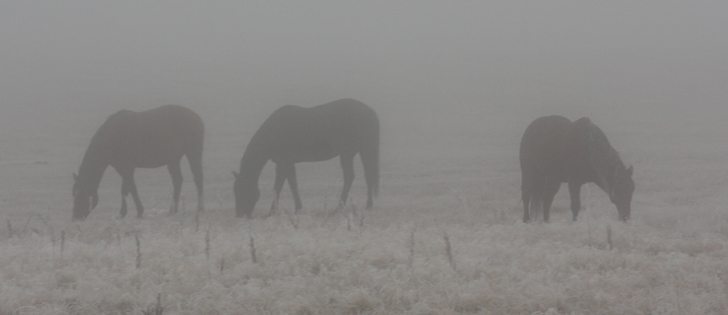

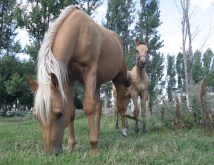
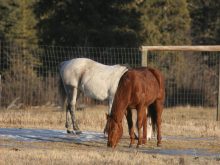
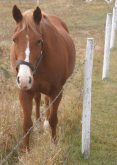

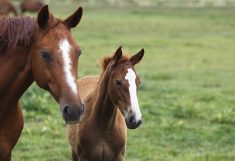
![Conservative agriculture critic and Alberta Foothills MP John Barlow said some [people who raise horses for the overseas meat market] were harassed and bullied and wanted no part of the study, even though they could lose their livelihood if the bill is passed. | File photo](https://static.producer.com/wp-content/uploads/2024/04/30150023/03-BJM121610horse-feedlot-235x165.jpg)






